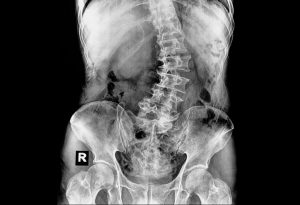In this Article
- What is Spina Bifida?
- What Are the Causes of Spina Bifida?
- What Are the Common Symptoms of Spina Bifida?
- Types of Spina Bifida
- Diagnosing Spina Bifida
- Spina Bifida Complications
- Treatments for Spina Bifida
- Does Your Baby Need a Team of Health Care Providers?
- Ways to Support Your Child
- Is There Any Way to Prevent Spina Bifida?
The development of a baby in the womb is a complex process. While in the womb, the development of the foetus is dependent on numerous factors. This includes the right intake of food by the mother to the structure of genes of the parents, everything has a bearing on the development of the child. During this fragile period, the baby is prone to defects or disorders which will hamper the natural growth and result in the baby being born with birth defects.
What is Spina Bifida?
Spina bifida is a neural tube defect and a congenital problem which is caused by the incomplete closing of the embryonic neural tube. It is a condition where the spinal cord is not fully covered by bones in the vertebral column, leaving it exposed.
Spina bifida is of two main types: Spina Bifida Occulta and Spina Bifida Cystica and the seriousness of the condition can vary from being very severe, to mild to barely noticeable.
What Are the Causes of Spina Bifida?
The exact cause of spina bifida is not known. However, it is most likely due to a combination of genetic, environmental and nutritional factors. Following are some of the causes which may lead to spina bifida in the unborn baby:
- Insufficient level of folic acid is a likely cause for this condition. Spina bifida and folic acid levels are related to each other. Folic acid plays an important along with consuming folic acid spina bifida.
- A low intake of essential nutrients such as proteins, iron, magnesium and niacin before conception can increase the risk of neural tube defects by two to five percent.
- Family history also plays a role in this condition. If one infant is born with spina bifida, chances are strong that the future siblings will also have the same condition.
- Use of medication such as valproate, which is used in the treatment of epilepsy and bipolar disorder, can cause congenital defects in the baby.
- Having diabetes or obesity increases the risk of having a baby with spina bifida.

While these are some of the probable reasons for the occurrence of this condition, there are no known reasons that have been directly attributed to spina bifida in a child.
What Are the Common Symptoms of Spina Bifida?
Symptoms of spina bifida depend on the severity of the defect. Children born with a mild form of the defect do not have any problems with it and will show no symptoms of the defect.
Children born with the most severe form of the defect may suffer from spine and brain issues that cause severe problems. Spina bifida symptoms in infants include:
- The absence of feelings in the legs, feet or arms of the child, disabling movement in these parts of the body.
- Having bladder or bowel movement problems resulting in leaking urine or difficulty in passing stool.
- The build-up of cerebrospinal fluid in the brain which can cause seizures, learning problems or vision problems even when treated.
- A curved spine such as in scoliosis.

Myelomeningocele is the most severe form of Spina Bifida. The symptoms of this form include:
- Cognitive Symptoms: Problems in the neural tube can impact the brain development negatively and lead to cognitive problems.
- Learning difficulties: Spina Bifida can lead to problems with attention and focus, understanding spoken language, solving problems and grasping abstract concepts.
- Paralysis: Spina Bifida can lead to partial or complete paralysis of limbs.
Types of Spina Bifida
There are two forms of Spina Bifida- Spina Bifida Occulta and Spina Bifida Cystica.
1. Spina Bifida Occulta
Occulta is a Latin word which means ‘hidden’. In this condition, the affected area may be covered by a layer of skin, a patch of hair, etc. It has no major complications with most parents not even knowing that their child has a medical condition.
2. Spina Bifida Cystica
Spina Bifida Cystica is characterized by the presence of a sac or a cyst, like a large blister at the back of the baby which is covered with a thin layer of skin. Spina Bifida cystica is of two types :
3. Myelomeningocele
A large fluid-filled sac bulges out of the baby’s back as meninges and in the spinal cord. At times, the sac bursts during childbirth exposing the spine and nerve.
4. Meningocele
This is the rarest form of spina bifida and less serious than myelomeningocele. Babies born with this condition have a fluid-filled sac on the head, neck or back. The sac can be as large as a grapefruit or as small as a grape. Babies with this condition can have a problem controlling bowel movements and can suffer from paralysis.
Diagnosing Spina Bifida
In order to detect this condition, the mother can undergo a spina bifida test while pregnant.
Most cases of spina bifida can be identified during routine ultrasound scan in pregnancy.
Maternal serum alpha-fetoprotein (MSAFP) test is a test which can indicate the condition of spina bifida in a foetus. This is a blood test to assess the levels of alpha-fetoprotein (AFP), a protein produced by the foetus, in the mother’s bloodstream.
If AFP is found in the mother’s blood, it indicates that the baby has an unusually high level of the protein and probably a neural tube defect which could be spina bifida or anencephaly, a condition which leads to an incomplete skull and an underdeveloped brain.
Presence of high AFP itself is not an indication of spina bifida. The doctor will order further blood tests and a suggest ultrasound scans to identify reasons for high AFP levels and check for signs of spina bifida.
Amniocentesis test can also help in detection of Spina Bifida in the baby.
Spina Bifida Complications
The condition of Spina bifida affects the spinal cord and the nervous system and can lead to following complications in the baby:
- Difficult delivery of the baby/traumatized delivery.
- Loss of control over bladder and bowel movements.
- Brain infection.
- Paralysis of limbs.
- Low blood oxygen level in the baby.
- Fluid build-up in the brain.
Some of the complications of spina bifida may last for a lifetime and will require proper care and supervision.
Treatments for Spina Bifida
The treatment for this condition on dependent on its severity.
- Babies with meningocele may undergo meningocele surgery where the meninges are pushed and hole is closed.
- Babies with myelomeningocele need to undergo surgery immediately after birth to close the opening in the back. The doctors can operate and correct this condition in the 25th week of pregnancy itself if the condition is detected early.
- The fluid build-up is also prevented by the timely draining into the stomach. The procedures adopted to do this are endoscopic third ventriculostomy procedure or a shunt procedure.
- Physical therapies can help improve strength and functioning of limbs in case of paralysis or difficulty in movement. Medications for spina bifida can be used to control bowel movements and also heal the wound in case of surgery.
Does Your Baby Need a Team of Health Care Providers?
Spina Bifida is a condition which will need support from qualified healthcare professionals to carry out the complex surgeries and monitor the health of the baby once the surgery is performed. It is, therefore, necessary to have a team of healthcare providers look after your baby until the condition is resolved or necessary protective measures are taken.
In order to cope up with the effects of spina bifida, the child may require continuing care from a neurosurgeon, especially if the child is affected with myelomeningocele or hydrocephalus.
Ways to Support Your Child
It is important to support children suffering from this condition. Children with paralysis may need the support of a wheelchair, leg braces or walker. The child might also have learning difficulties in school and will require special attention.
The aim is to empower the child to lead a normal, active life without the fear of disabilities. This can be done by continuing care from the parents and professional doctors.
Is There Any Way to Prevent Spina Bifida?
Spina bifida can be prevented if women consume 400 micrograms of folic acid before pregnancy and continue to take it throughout the first trimester. Sources of folic acid include orange juice, eggs and dark green leafy vegetables.
Undergoing tests to identify neural tube defects during pregnancy can also help in identifying the condition at the earliest and enable necessary preventive measures to be taken.
While the condition is controllable by surgery, babies born with meningocele or myelomeningocele will need long-term care in order to help treat any underlying conditions which may result from spina bifida. Timely diagnosis of the condition will enable the doctors to take necessary preventive measures and ensure minimum damage to the baby.









